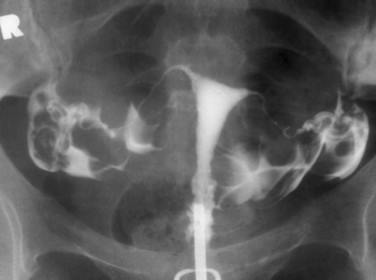If a woman is trying to conceive a baby, she should know that there are many parts of the reproductive system that are responsible for conception and that they must be healthy, for example, in women, the ovaries need to produce an egg every month, that is called ovulation. , the uterus must be free of any type of abnormality such as fibroids, adenomyosis, polyps, etc. And finally, the fallopian tubes that are bilaterally connected to the uterus must also be open and healthy
If any of these reproductive parts in women does not work properly, a woman could have trouble getting pregnant.
The fallopian tubes are connected to the uterus, and when the egg is released from the ovary at the time of ovulation, the egg and sperm are fertilized in the fallopian tube after an embryo develops and continues through the fallopian tubes. Fallopian until reaching the uterus. where it will implant in the uterine lining. So if the fallopian tubes are blocked or unhealthy, then there will be no fertilization or the embryo will not survive in the tube.
Blocked tubes can occur for different reasons, but no matter what the cause is, your doctor will diagnose you with a test called a hysterosalpingogram (HSG).
WHY DO I NEED A HISTEROSALPINGOGRAM (HSG)?
Hysterosalpingography is performed for patients who have difficulty conceiving despite regular sexual intercourse over a period of 1 or 2 years because it is a test that can not only confirm that a woman’s fallopian tubes are open, but also can assess whether the uterine cavity is normal. It is an opd procedure in which the test lasts no more than 10 minutes. It involves putting an iodine-based dye through the mouth of the uterus called the cervix and taking x-rays. These x-rays help evaluate the internal shape of the uterus along with the fallopian tubes.
HSG must be done within 5 days after the end of your period. This is to reduce the risk of having an undiagnosed pregnancy when the test is done.
On the day of the test, your doctor may advise you to take a pain reliever an hour before going to HSG, so that you can help with the discomfort of the test. In addition, some antibiotics are recommended to reduce the risk of infection.
THE HSG PROCEDURE
At the beginning of the procedure, a speculum is inserted into the vagina to view the cervix, similar to a Pap test. The cervix is cleaned with an antiseptic solution; Next, a thin plastic catheter, usually about the size of a ballpoint pen, is placed inside the cervix. Once in place, an iodine-based dye is injected through the catheter. This passes through the uterus, into the fallopian tubes unless blocked, and into the pelvic cavity. This is what allows the radiologist to see the shape of the uterus and detect any blockages.
The process involves specialized radiography known as fluoroscopy. The uterus and fallopian tubes are full of fluid that contains a dye that can be detected by an x-ray machine, allowing the radiologist to see the inside of these organs through a TV-like monitor.
IS THERE ANY RISK IN HSG?
This is generally a very safe procedure, but there are rare risks. There is a possibility of infection in only one percent of cases, or a very rare allergic reaction to the iodine used.
IS HSG PAIN?
Many women wonder if the hysterosalpingography (HSG) test will cause pain. The HSG experience is different for every woman, some women only have mild cramps, while some may complain of excruciating pain, especially if the tubes are blocked. If you are very afraid of pain, you can request that it be done under short general anesthesia. Even if there is pain, it is a short test that may also have some spots. You can also resume your normal daily activities.
What do the results mean?
HSG helps the doctor verify two important factors:
1-The fallopian tubes are blocked: if the fallopian tubes are blocked, a woman will not be able to get pregnant because the egg cannot reach the sperm.
2-The fallopian tubes are open: if the tubes are open, women can conceive through naturally scheduled sexual intercourse or, if necessary, through IUI (INTRAUTERINE INSEMINATION).
3- The internal shape of the uterus is normal or not; If the shape of the uterus does not look perfect, then it may be considered the cause in some women with recurrent pregnancy loss. This test may suggest that a hysteroscopy be done to look inside the uterus and correct defects such as the septum if they are present.
Are there other options?
Laparoscopy can also identify if the tubes are open, using a procedure called chromopertubation. Echohonosterosalpingography (SHG) is an alternative procedure to assess tubal patency with the help of ultrasound instead of X-ray, but laparoscopy is surgery under general anesthesia, and sonohysterosalpingography is also performed as HSG with similar discomfort.
Follow Us

Add Your Comment